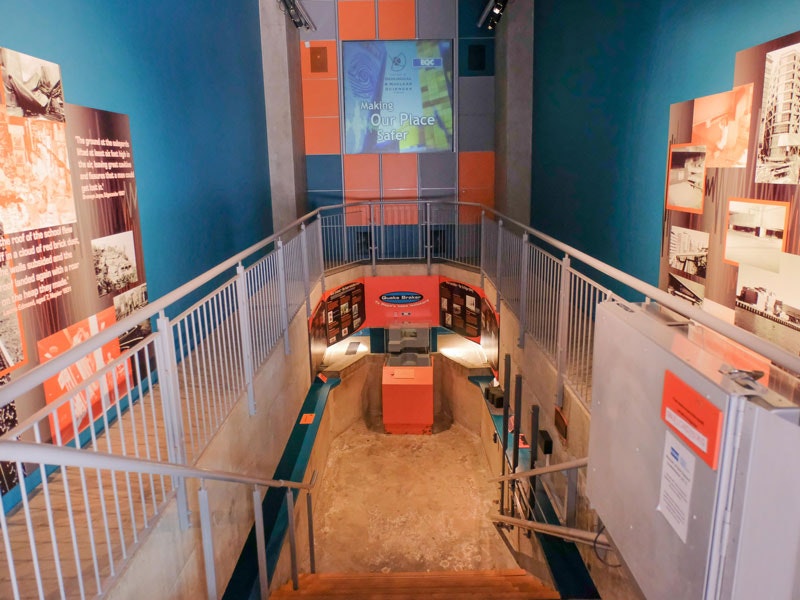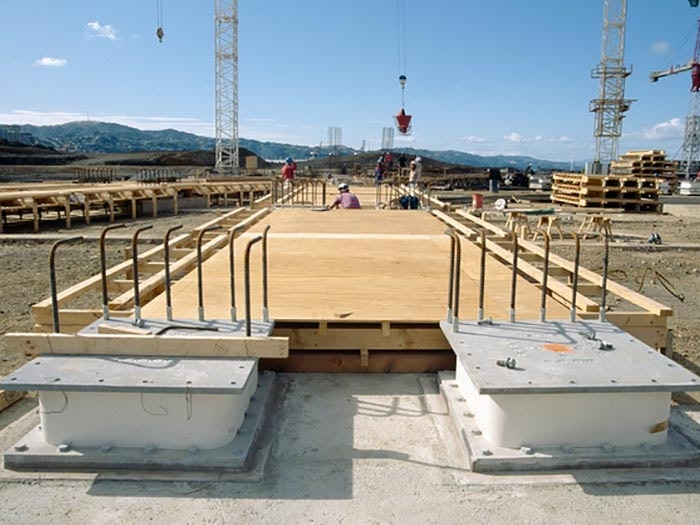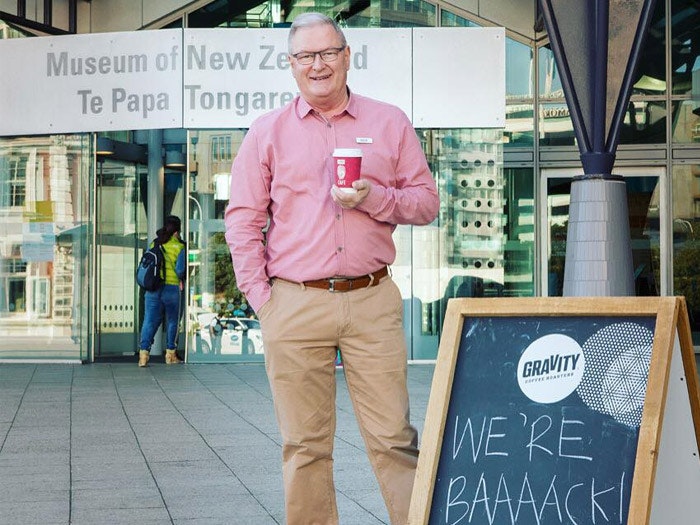
Quake Braker
Go underground to see the amazing Kiwi innovation that ‘puts the brakes on’ in an earthquake.
On now
Permanent exhibition
Exhibition Ngā whakaaturanga
Free museum entry for New Zealanders and people living in New Zealand
Open every day 10am-6pm
(except Christmas Day)
Free museum entry for New Zealanders and people living in New Zealand
What sets our building apart? Just how many base isolators support us? How many rugby fields could you fit inside Te Papa?
The museum:
took four years to complete
weighs 64,000 tonnes
has six floors
has 36,000 square metres of public floor space (the size of three rugby fields)
is made of 80,000 cubic metres of concrete
has enough reinforcing steel to stretch from Wellington to Sydney
sits on 152 base isolators to protect the building from earthquake movement
is clad in 14,500 grey and yellow stone panels
uses New Zealand–grown woods inside:native – mataī (wall panels), tawa (handrails), rewarewa (lift linings)exotic – macrocarpa (ceilings), eucalyptus (some floors).
Our museum building sits on land owned by the Museum of New Zealand Te Papa Tongarewa. This comprises 2.3019 hectares.
We also lease:
5,689 square metres from Wellington Waterfront Ltd on our northern and north-eastern boundaries, which includes plantings
two small blocks from Wellington City Council on our south-eastern corner – containing the grassed area at the corner of Cable and Barnett Streets, and a small portion of our bus lane and car park.
Our building sits close to a major fault line on soft, reclaimed land – how do we keep our taonga and people safe?
To stabilise the site, 30-tonne weights were dropped on the ground 50,000 times – much to the dismay of nearby residents! Shock absorbers made of rubber and lead allow the building to move in earthquakes – up to half a metre in any direction.
In a major earthquake, Te Papa would be among the safer places in Wellington.
In a one-in-250-year earthquake, the building would be unharmed.
In a one-in-500-year earthquake, the building would need repairs.
In a one-in-2000-year earthquake (‘the big one’), the people and collections inside Te Papa would be safe, but the building might have to be demolished.

Go underground to see the amazing Kiwi innovation that ‘puts the brakes on’ in an earthquake.
On now
Permanent exhibition
Exhibition Ngā whakaaturanga

How did Te Papa survive the Kaikoura earthquake nearly unscathed?

16 November 2016 – Te Papa is open from Wednesday 16th November, after recovering from the earthquake which happened just after midnight on Sunday.